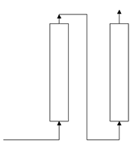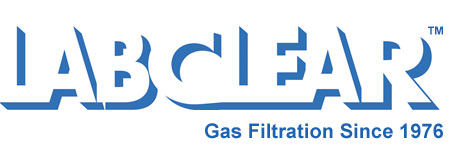Frequently Asked Questions
General Questions:
GQ1:
What is the difference between the various molecular sieves? How do I select the Molecular Sieve properly?
GQ2: What are the bulk densities of the materials used in your filters and purifiers? GQ3: How do I get a Material Safety Data Sheet for the active ingredients in your products? GQ4: What is the correct orientation of your filters and purifiers? Pressure Drop Across Filters and Purifiers:Filters
FQ1:
What are the active ingredients in your filters?
FQ2: Do you use silica gel in your filters? FQ3: What is the moisture removal capacity of your filters? FQ4: What is the moisture concentration of the exit gas from your filters? FQ5: What gaseous compounds are incompatible with your filters? FQ6: What is the maximum operating pressure for your filters? FQ7: What is the maximum operating temperature for your filters? Purifiers
PQ1:
What is the principle behind your purifiers (oxygen traps)?
PQ2: Can the purifier be used to remove moisture from an inert gas stream? PQ3: What are the active ingredients in your purifiers? PQ4: Can your purifiers be used to remove oxygen from carbon dioxide? PQ5: How long would your purifiers last in open air? PQ6: How large a purifier unit do I need for my application? PQ7: What gases are compatible with your purifiers? PQ8: I need a purifier that operates at high pressure. Can you supply one? PQ9: I need a purifier larger than your largest (20 liter) unit. Can you make one for me? PQ10: Can the purifier be used to remove trace quantities of oxygen from a stream of nitrous oxide? PQ11: Can your purifiers be used to separate oxygen from other gases? PQ12: What is the maximum operating pressure for your purifiers? PQ13: What is the maximum operating temperature for your purifiers? PQ14: Can the purifiers remove CO from a gas stream? PQ15: What effect will trace quantities of sulfur have on the purifier? Specialty Products
Please contact our
Tech Support
for specific questions about our specialty products.
General QuestionsGQ1:What is the difference between the various molecular sieves? How to select the Molecular Sieve properly?
A:
For the removal of water from gases, there is little difference between 3A, 4A, 5A and 13X. The equilibrium adsorbed water capacities for these four types of molecular sieves are about 20%. Therefore, for drying air or inert gases, any one of them, or their mixture in any proportion, will work in the same manner.
The main difference between them is pore size. The nominal pore sizes for 3A, 4A, 5A and 13 X are .3, .4, .5 and 1.0 nanometers, respectively. 3A is mainly applied to absorb water molecules in drying natural gas and oil gases, especially in drying Catalytic Splitting Decomposition Oil gases and Alkenes. 4A is mainly used to make static dehydration in airtight gas or liquid system. In addition, it can remove the molecules of ethyl alcohol, hydrogen sulfide, carbon dioxide, and ethylene. 5A is mainly applied to separate isomerism alkenes. Meanwhile, it can also absorb the molecules which can pass through in 3A and 4A molecular sieve and whose diameters are less than 0.5 nm. All molecules which can be absorbed on Molecular Sieve Type 3A, 4A, and 5A can be absorbed on Type 13X. In addition, Type 13X can absorb molecules of larger critical diameters, such as aromatics and branched-chain hydrocarbons. GQ2: What are the bulk densities of the materials used in your filters and purifiers?
A:
The bulk densities of the various fill materials are as follows:
GQ3: How do I get a Material Safety Data Sheet for the active ingredients in your products?
A:
You can
download the Material Safety Data Sheets (MSDS)
from our web site.
GQ4: What is the correct orientation of your filters and purifiers?
A:
In order to avoid channeling, we recommend that all our units be mounted vertically, with the gas stream flowing upward through the units. If you need to arrange more than one unit in series, the preferred flow pattern is shown below:

↑ BACK TO TOP Pressure Drop Across Filters and PurifiersPRQ1:What is the pressure drop across your filters and purifiers?
A:
The following table gives approximate pressure drops for all our units (filters as well as purifiers):
If you gas mixture is different from air or nitrogen, please contact our
Tech Support
for an estimate of the pressure drop.
Note 1: To convert (mm water)/(lpm flow) to psi/(cfm flow), multiply (mm water/lpm) by .04015. Note 2: to convert mm water to psi, multiply mm water by .00142. ↑ BACK TO TOP FiltersFQ1:What are the active ingredients in your filters?
A:
The active ingredients in our see-through filters are a mixture of 13-X molecular sieve and Indicating Drierite® (standard) or an indicating silica gel (special request, same price). For larger filters, the active material is 13-X molecular sieve. We can also provide any combination of the following ingredients upon special request: Indicating Drierite®, Drierite®, indicating and non-indicating silica gel, and the molecular sieves 3A, 4A, 5A and 13X. In addition, we also make specialty filters for hydrocarbon removal, using activated carbon.
The Material Safety Data Sheets (MSDS) for all these ingredients are available on our web site. FQ2: Do you use silica gel in your filters?
A:
The standard ingredients in out filters are molecular sieve 13X and indicating Drierite, however, we can provide filters containing any desiccant molecular sieves 3A, 4A, 5A, 13X, indicating and non-indicating Drierite and silica gels upon special request.
FQ3: What is the moisture removal capacity of your filters?
A:
The moisture-holding capacities of our units for an incoming air stream at 10% relative humidity at room temperature and pressure are:
What is the moisture concentration of the exit gas from your filter?
A:
At room conditions, the moisture content of the exit gas is 0.005 mg/liter, corresponding to a dew point of -63 ° C, as long as the flow rates are within the limits indicated for the specific units.
FQ5: What gaseous compounds are incompatible with your filters?
A:
The transparent unbreakable tubing used in DGF filters is clear PVC. The one used in RGF filters is acrylic.
PVC is affected by a number of compounds. Among them are acetic acid, boric acid, formic acid, hydrofluoric acid, nitric acid, sulfuric acid, ammonium chloride, aniline, carbon disulfide, carbon tetrachloride, ethanol, methanol, and phenol. This, of course, is not a complete list, and there may be other chemicals that attack PVC. Acrylics are affected by a number of chemicals. Among them is acetone, gasoline, benzene, carbon tetrachloride. This is not a complete list, and there may be other chemicals that react with acrylics. To find out if our filters are compatible with your specific gas stream, please contact out Tech Support . FQ6: What is the maximum operating pressure for your filters?
A:
The maximum operating temperature and pressure for each of our units is listed in the catalog on our web site.
FQ7: What is the maximum operating temperature for your filters?
A:
For see-through units made of PVC and acrylic, the maximum operating temperature is 100 °C. For the units made out of aluminum, carbon steel and stainless steel, the maximum operating temperature is 200 °C.
↑ BACK TO TOP PurifiersPQ1:What is the principle behind your purifiers (oxygen traps)?
A:
The active material in our purifiers consists of metal oxides that have been reduced to an activated metallic form. When they come in contact with oxygen, they react with it to form metal oxides. This way, we truly remove oxygen from the gas stream, rather than converting it into something else (such as water) and reintroducing it back into the gas stream.
PQ2: Can the purifier be used to remove moisture from an inert gas stream?
A:
Yes, our purifiers will remove moisture from an inert stream, however, if moisture is the main impurity you are trying to remove, we suggest you use our filter units for greater efficiency and capacity.
PQ3: What are the active ingredients in your purifiers?
A:
The active ingredients in our standard purifiers (except IOT-125 and IOT-250) are Q5 (a mixture of metal oxides) and molecular sieve 13X. We can also provide any combination of the following ingredients upon special request: Q5, activated carbon, and the molecular sieves 3A, 4A, 5A and 13X.
The active ingredients in IOT-125 and IOT-250 are a mixture of metal oxides, as described in the MSDS for IOT. PQ4: Can your purifiers be used to remove oxygen from carbon dioxide?
A:
Yes.
PQ5: How long would your purifiers last in open air?
A:
For a few seconds. The purifiers are designed to take up trace amounts of oxygen from inert gas streams. The oxygen in the air will quickly saturate the purifiers, and make them unusable. We suggest that you store the purifiers in their original packing, and take them out of the packing only for the final installation in your application.
PQ6: How large a purifier unit do I need for my application?
A:
The following table lists the maximum flow rate for each of our purifiers. Please select the next higher size purifiers so that you do not exceed the maximum flow rate.
PQ7: What gases are compatible with your purifiers?
A:
All inert gases are compatible with the purifiers. In addition, hydrogen, hydrocarbons (except acetylene), chlorinated or fluorinated hydrocarbons, carbon dioxide and carbon monoxide are also compatible. Introduction of oxidizing gases (e.g., oxides of nitrogen, halides, such as chlorine) into the purifiers should be avoided, since they will react with the active ingredients, unless they are present in trace quantities and you would like to remove them.
PQ8: I need a purifier that operates at high pressure. Can you supply one?
A:
Yes. Please contact
techsupport@labclear.com
with the details, and we’ll work with you to develop a unit especially for you.
PQ9: I need a purifier larger than your largest (20 liter) unit. Can you make one for me?
A:
Yes. Please contact
techsupport@labclear.com
with the details, and we’ll work with you to develop a unit especially for you.
PQ10: Can the purifier be used to remove trace quantities of oxygen from a stream of nitrous oxide?
A:
No. Nitrous oxide is an oxidant, just like oxygen, so it will quickly react with the active ingredient in our unit, and make it unusable.
PQ11: Can your purifiers be used to separate oxygen from other gases?
A:
The purifiers are designed to remove trace quantities of oxygen from inert gases. The removed oxygen is chemically bound with the active ingredient, and is not recoverable.
PQ12: What is the maximum operating pressure for your purifiers?
A:
The maximum operating temperature and pressure for each of our units is listed in the catalog on our web site.
PQ13: What is the maximum operating temperature for your purifiers?
A:
The following table lists the maximum temperature for each of our purifiers.
PQ14: Can the purifiers remove CO from a gas stream?
A:
No, the CO will pass through the purifier unaffected. It will not be adsorbed or oxidized.
PQ15: What effect will trace quantities of sulfur have on the purifier?
A:
It depends on what form the sulfur is in. Please contact
Tech Support
with the specifics.
↑ BACK TO TOP Specialty Products Please contact our Tech Support for specific questions about our specialty products. |
